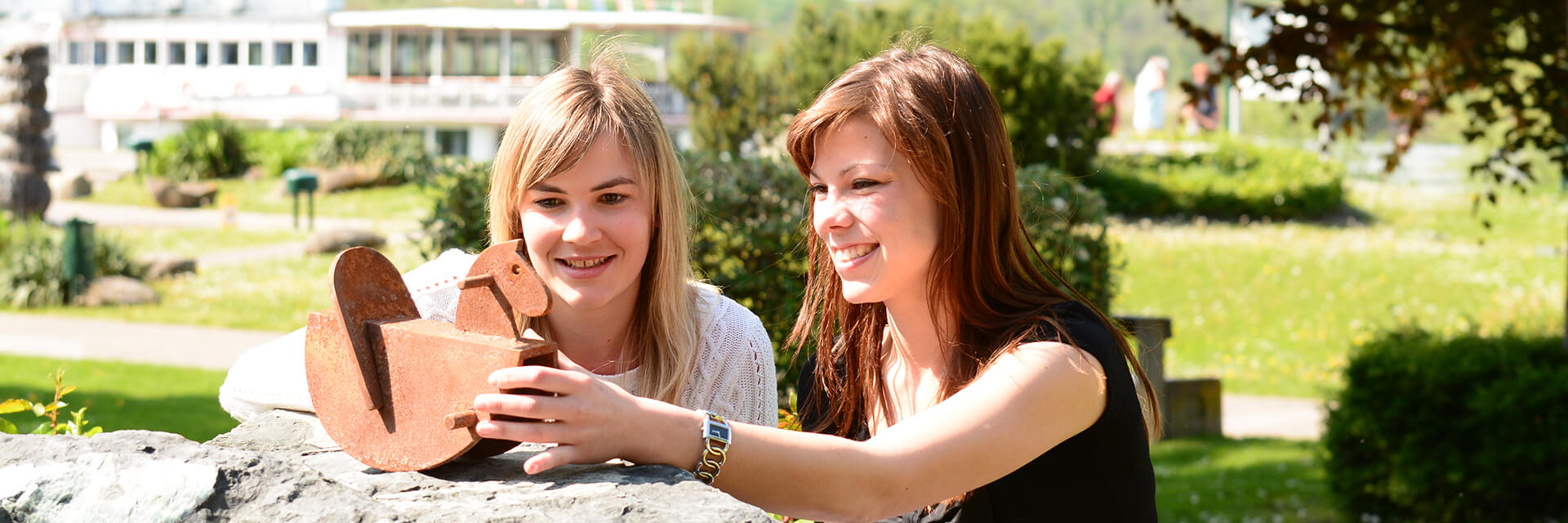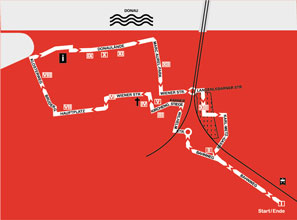XI Römerturm
[Translate to English:] Start of the circular special-theme trail: Tulln main station
Distance: 3.6 km
Duration: About 90 min.
Difficulty: Easy, unhindered access
Schiele Folder DE
Schiele Folder EN
[Translate to English:]
Town hirstory or Egon and the ancient Romans
Here you find out why the ancient Romans settled in Tulln and where medieval cargo vessels anchored; what Egon’s family owes the emperor and how a flanking tower became a salt warehouse.
[Translate to English:] The population of Tulln was not more than 4,000 in Egon’s school years. It was by no means a big city, but it was a significant place. In the narrow lanes along the old town wall, history was tangible. The Roman tower had stood there for nearly two millennia. The people of Tulln referred to it as the Salt Tower. It was erected by the master builders of Comagenis, a Roman fort. From their perch atop the tower, the guards had a view of the entire Tulln Basin. More than 1,000 cavalrymen were on duty here in the first century AD. They watched over a Danube ford that was important militarily. They protected the Noric Limes, the northern border of the Roman Empire, from barbarian attacks. And they engaged in lively trade with the farmers living around the fort.
![[Translate to English:] Vollständig erhaltener Römerturm, um 1918 [Translate to English:] Vollständig erhaltener Römerturm, um 1918](/fileadmin/_processed_/2/4/csm_11_Roemerturm_img319_628px_komp.jpg_5fa0fd9b4f.jpg)
[Translate to English:] Fully preserved Roman tower, ca. 1918
[Translate to English:]
Steadfast and unshakable.
Four hundred years later after the Rugii campaigns, the fort was evacuated by order of Odoacer. The sizable ten-meter-high flanking tower remained. Its walls are nearly a meter thick. As part of the old city fortifications, it is steadfast and unshakable. However, the settlement had lost its significance as a Roman outpost along with the soldiers. It was not until the Middle Ages that Tulln experienced another period of prosperity as a trading center on the water. Far and wide, there was no better ford to cross the Danube. The big market square attracted merchants from all over to the Tulln Basin. And the mighty tower was used to keep the landing stage safe for ferries and trading vessels.
[Translate to English:]
Baby premiere in train station.
But the Danube vessels were slow. And crossing the ford in small rafts was dangerous. The townspeople had long been using the Roman tower as an arsenal and salt warehouse. Then a new railroad was established, the Kaiser-Franz-Josefs-Bahn, and Tulln became a significant transport junction again, this time in the Austro-Hungarian Monarchy. An iron railroad bridge was built across the river. The town became the district seat and a center of trade. Emperor Franz Josef ordered this rail line to be developed. In fact, Egon’s father had the emperor’s order to thank for his promotion to station master in Tulln. Egon saw the light of day in 1890 as the first baby to be born right in the station – in the large station master’s apartment with a view of the platforms.
Here you can see a cutout of the video "The roman limes in Tullnerfeld".


